Categories

The Castell d’Alaró hike is a 4-6 km moderate trail offering historical ruins and panoramic views in Mallorca, reminding you how real Mallorca feels once you step away from the coast.
By Mallorca Select
16 November 2025
Reading Time: 9 minutes
Mallorca Select is a boutique Luxury Real Estate Agency in Mallorca.

The Castell d’Alaró hike is a 4-6 km moderate trail offering historical ruins and panoramic views in Mallorca, reminding you how real Mallorca feels once you step away from the coast.
What makes this trail stand out isn’t just the scenery, though.
You start your day in front of Es Verger, with the smell of wood-fired lamb drifting out of the kitchen, and minutes later you’re following a route that farmers, soldiers, and wandering locals have taken for generations.
As you climb, the landscape opens in stages:
First the terraces, then the forest shade, then those sudden drops that remind you you’re gaining real height.
The silhouette of the castle shows up sooner than you expect, but it keeps its distance until the final approach.
Needless to say it, reaching the top always feels earned, no matter how many times you’ve done it.
If you want a hike that gives you a clear sense of the island’s backbone, this is the one.
The rustic country-house restaurant, Es Verger, is the starting point of our trip to the Castel D’Alarò.
It is perched high on the mountain, reached by a narrow road that seems to test every driver’s patience.
But the moment you arrive, the first thing you notice is the smell.
The slow-roasted lamb comes through the doorway before anything else, with its rich and unmistakable flavours.
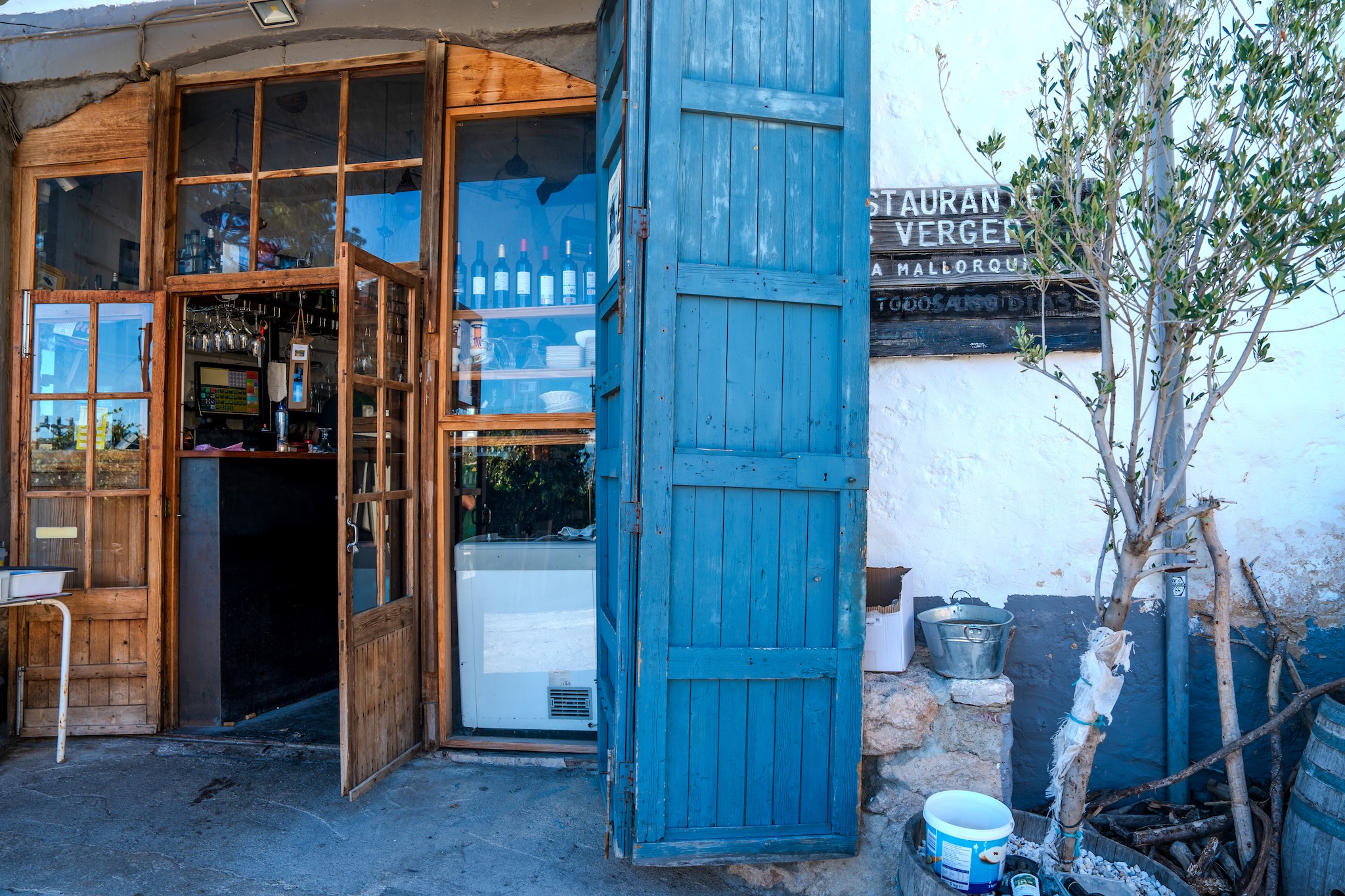
Everything here is straightforward and honest.
If you order the lamb shoulder or the roasted suckling pig, you get a plate that looks like it came straight out of a family kitchen.
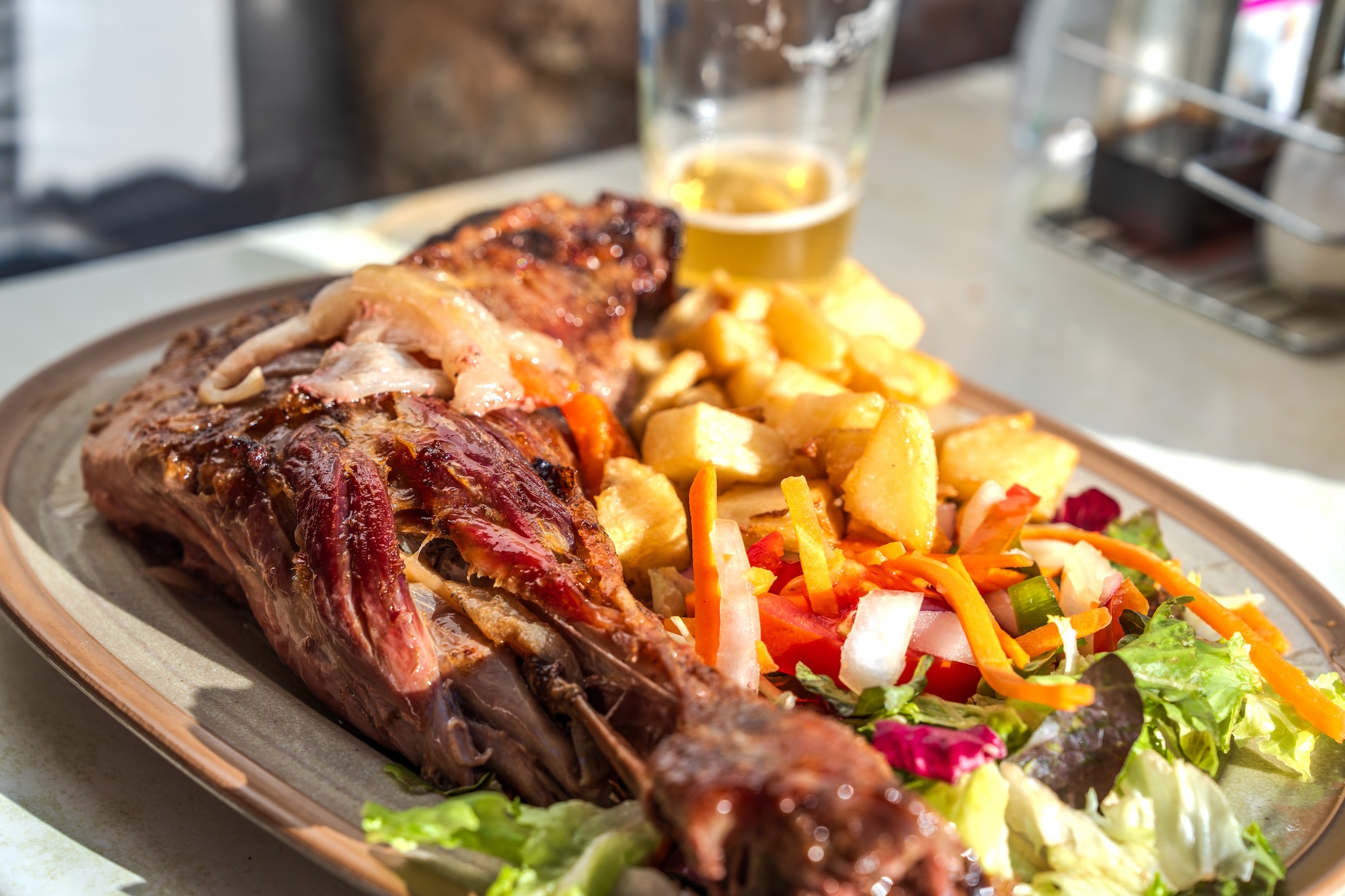
Their lamb has earned its reputation for a reason. It’s slow-cooked until the meat falls apart, the kind of dish that makes you sit back for a moment before you even take the first bite.
If you do have the appetite, i strongly recommend you to eat at Es Verger after the walk, it turns the whole experience into something more grounded and actually we could not imagine skipping it after our well earned hike.
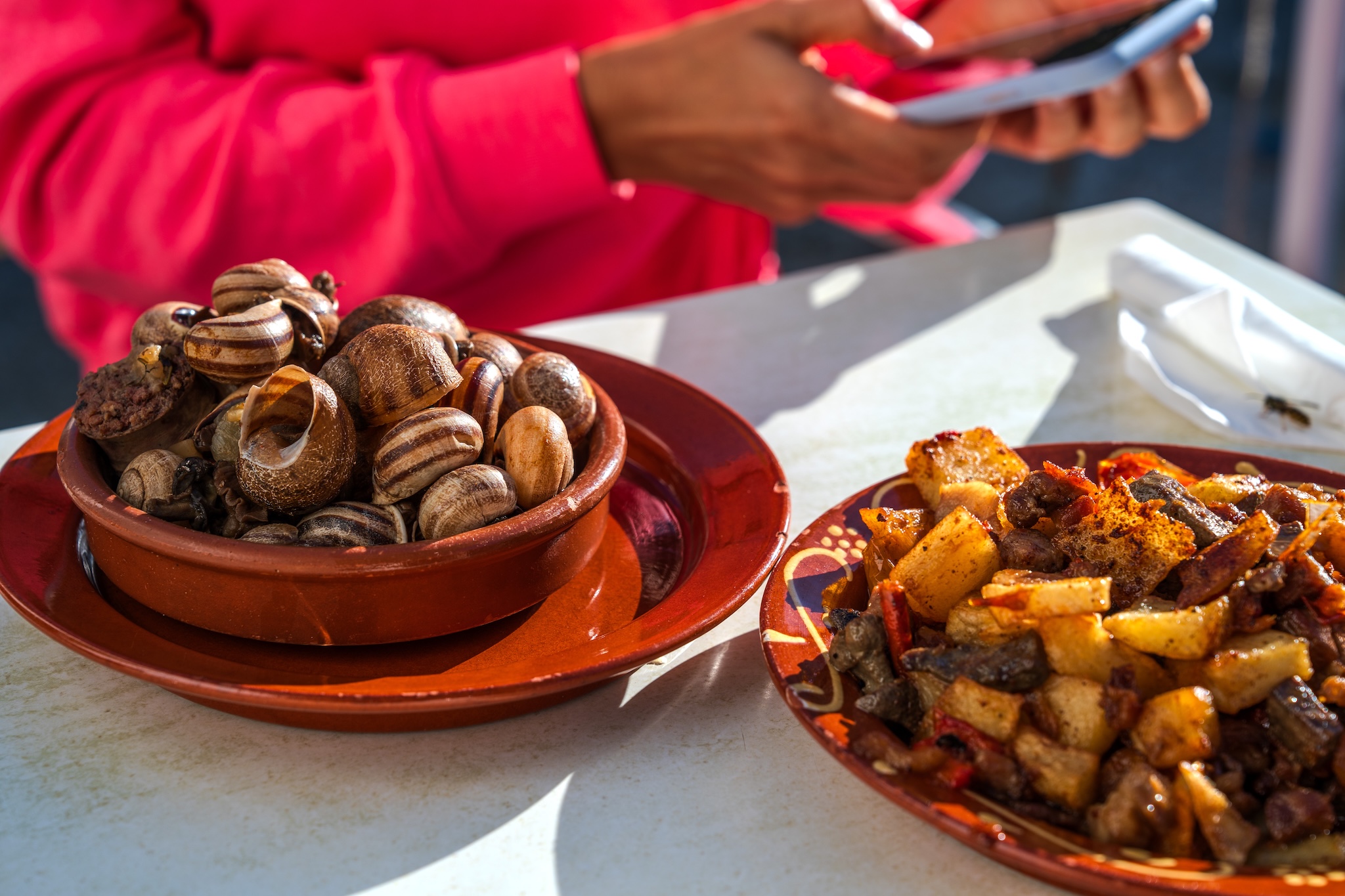
The path from Es Verger to Castell d’Alaró starts gently, almost deceptively so.
You leave the restaurant behind and step straight through olive terraces and after fifteen to twenty minutes, the route shifts.
The terraces fade, the ground steepens, and a forested section takes over.
This part of the climb is steady but manageable, the kind of ascent that gets your legs working without pushing you into effort mode.
The path is well marked, and the canopy offers enough shade to keep the climb comfortable even on warmer days.
As the forest thins out, the views open quickly.
One moment you’re enclosed in trees, the next you’re looking down across valleys and cliff faces that drop away far more dramatically than expected.
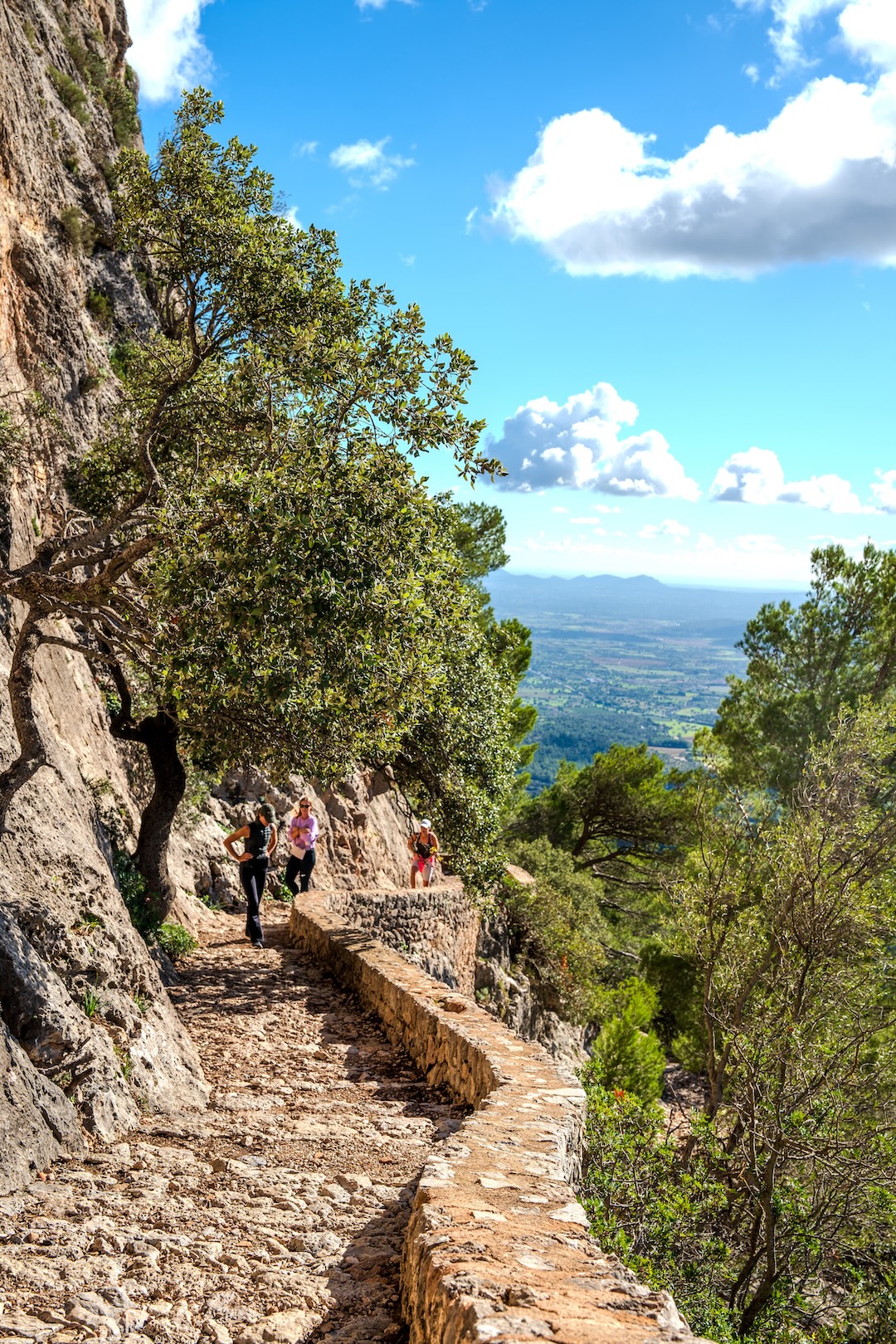
This is where the hike starts to feel like a mountain trail.
The silhouette of the castle appears ahead and It stays in view for most of the final stretch, acting almost like a guide, reminding you exactly what you’re working toward.
The last approach is a mix of rocky steps and flatter sections. Nothing technical, nothing exposed, but enough variety to keep it interesting.
You pass through the first stone gate, then weave your way up towards the second, and suddenly the ruins are around you. It’s a natural pause point. Most hikers stop here to take in the first set of views before continuing the final push to the summit.
The beauty of this route is its balance, short enough for an afternoon outing, structured enough to feel like a proper hike.
It’s welcoming for families and dogs as long as everyone is comfortable with uneven terrain. There’s no need for special gear, just decent shoes and a bit of focus on the rockier sections.
The final meters to Castell d’Alaró always feel different from the rest of the hike.
Even in ruins, the structure has a presence you can’t ignore.
The outer walls appear first, broken but still impressive, marking the boundary of what was once a fully functioning fortress.
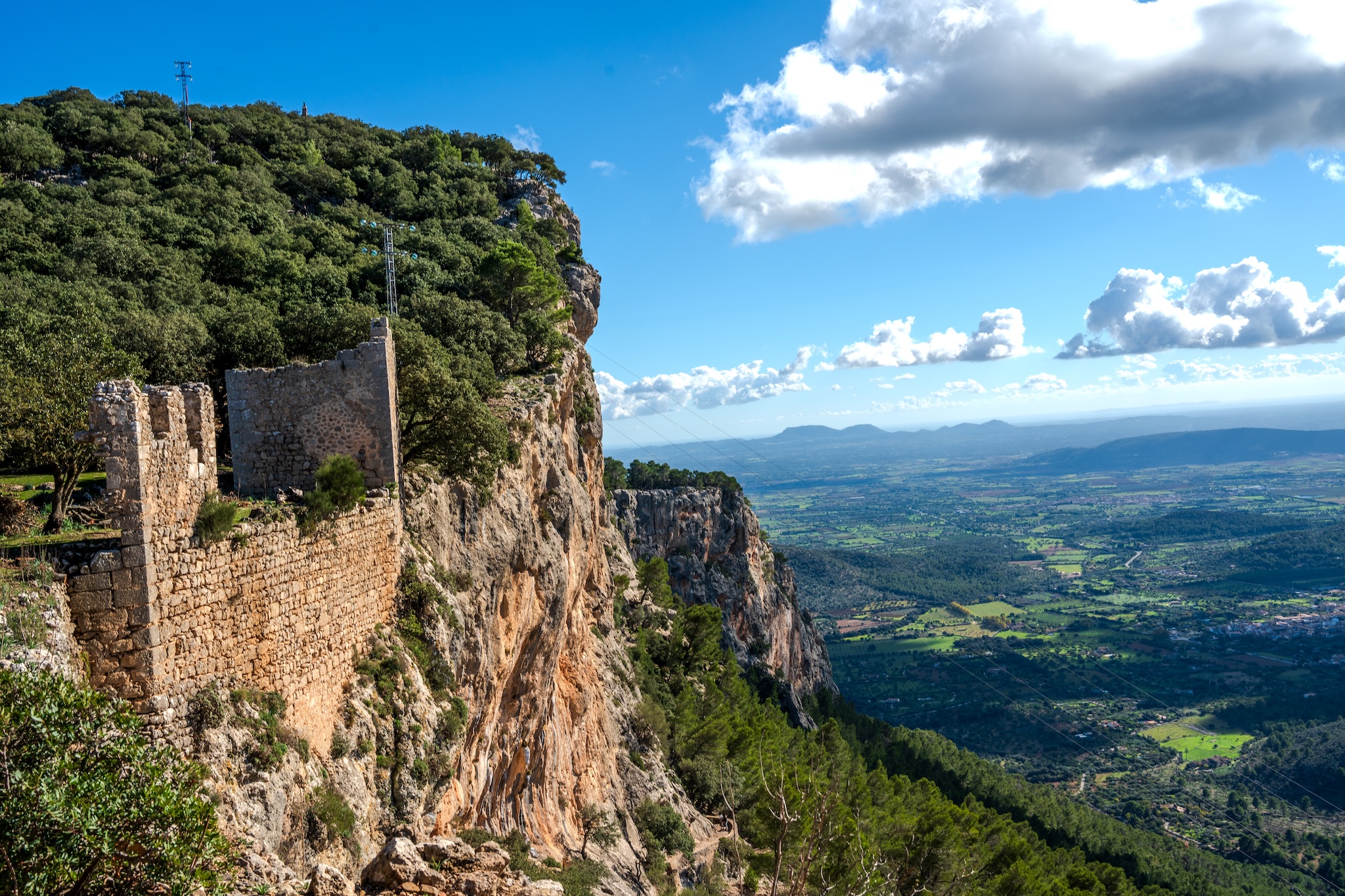
As you continue upwards, you reach the inner section of the castle. This is the part that gives you the clearest sense of scale.
Standing here, it becomes obvious why this place was so difficult to conquer.
Just above the main ruins sits the small refuge and chapel. Both are simple, lived-in structures with a purpose that hasn’t changed much over the years.
The refuge offers shelter to hikers who stay overnight, and the chapel feels almost suspended between sky and stone.
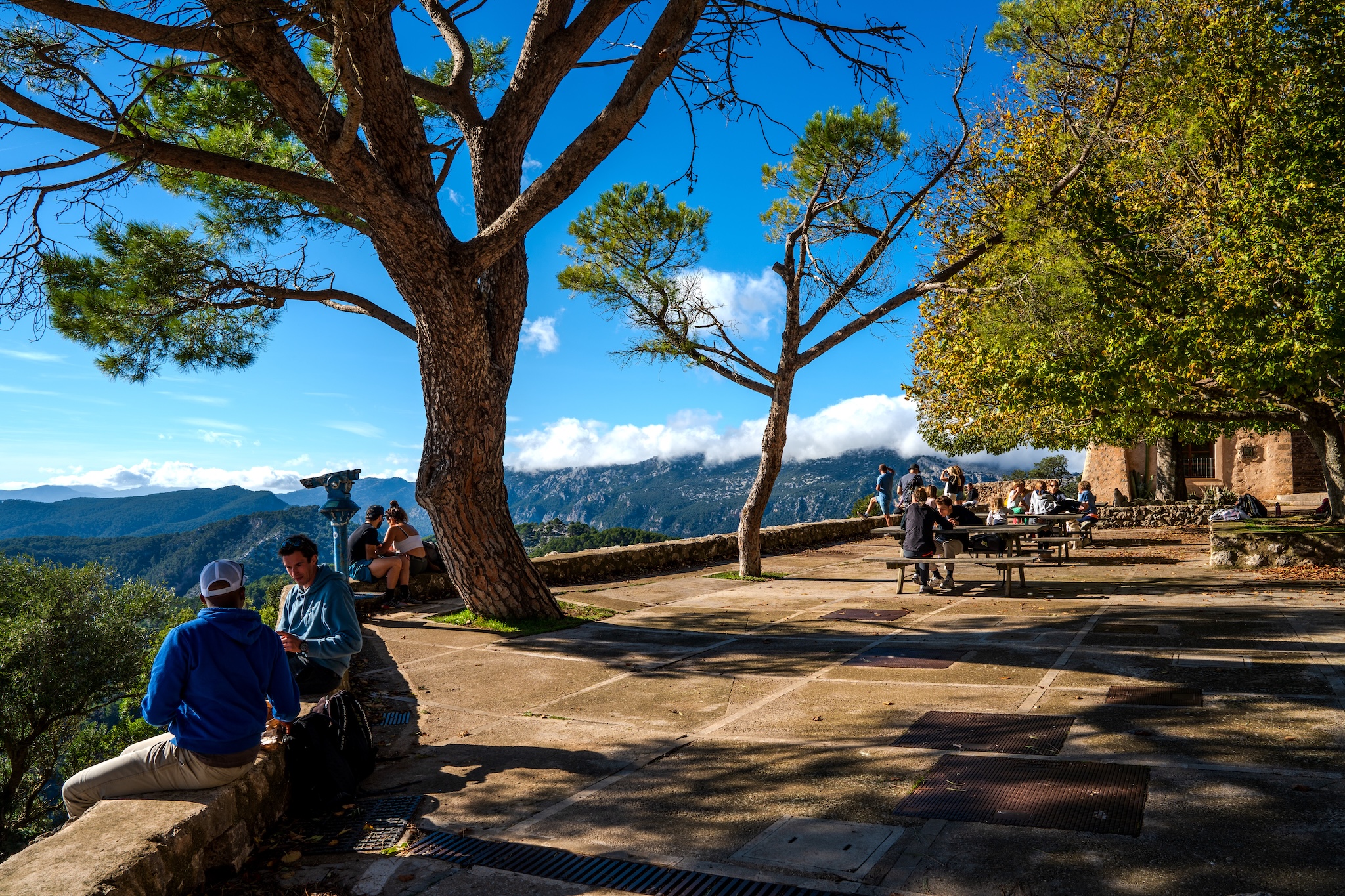
What stands out is the atmosphere here, quiet, steady, and grounded.
Reaching this point marks the moment where the hike shifts from effort to perspective. The hard work is behind you, and the real reward sits just beyond the final doorway.
The summit terrace is only steps away, and the view waiting there is the moment everyone remembers.
Stepping onto the summit terrace is the moment the entire hike comes together and suddenly the island opens in every direction without a single obstruction.
To the south, Palma Bay spreads out like a slow arc, with the city sitting quietly behind it.
On clear days you can trace the entire coastline, from the curve of the harbor to the distant shimmer of the plains.
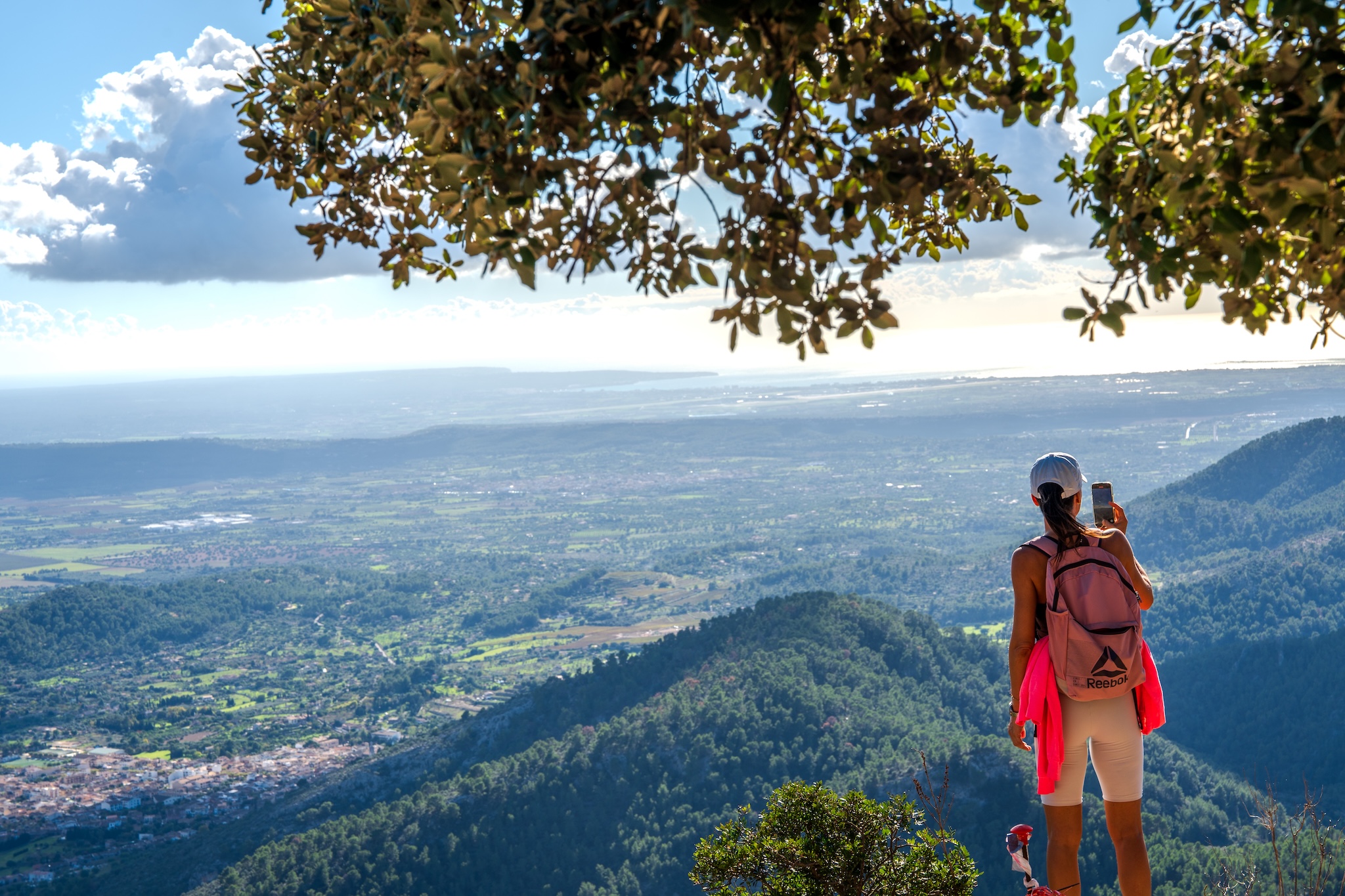
Look north, and you get the full character of the mountains.
Peaks rise in uneven shapes, sharp in some spots, rolling in others, each one catching the light differently depending on the hour.
From here you understand the scale of the range. It feels bigger, wilder, and more intricate than it ever does from the road.
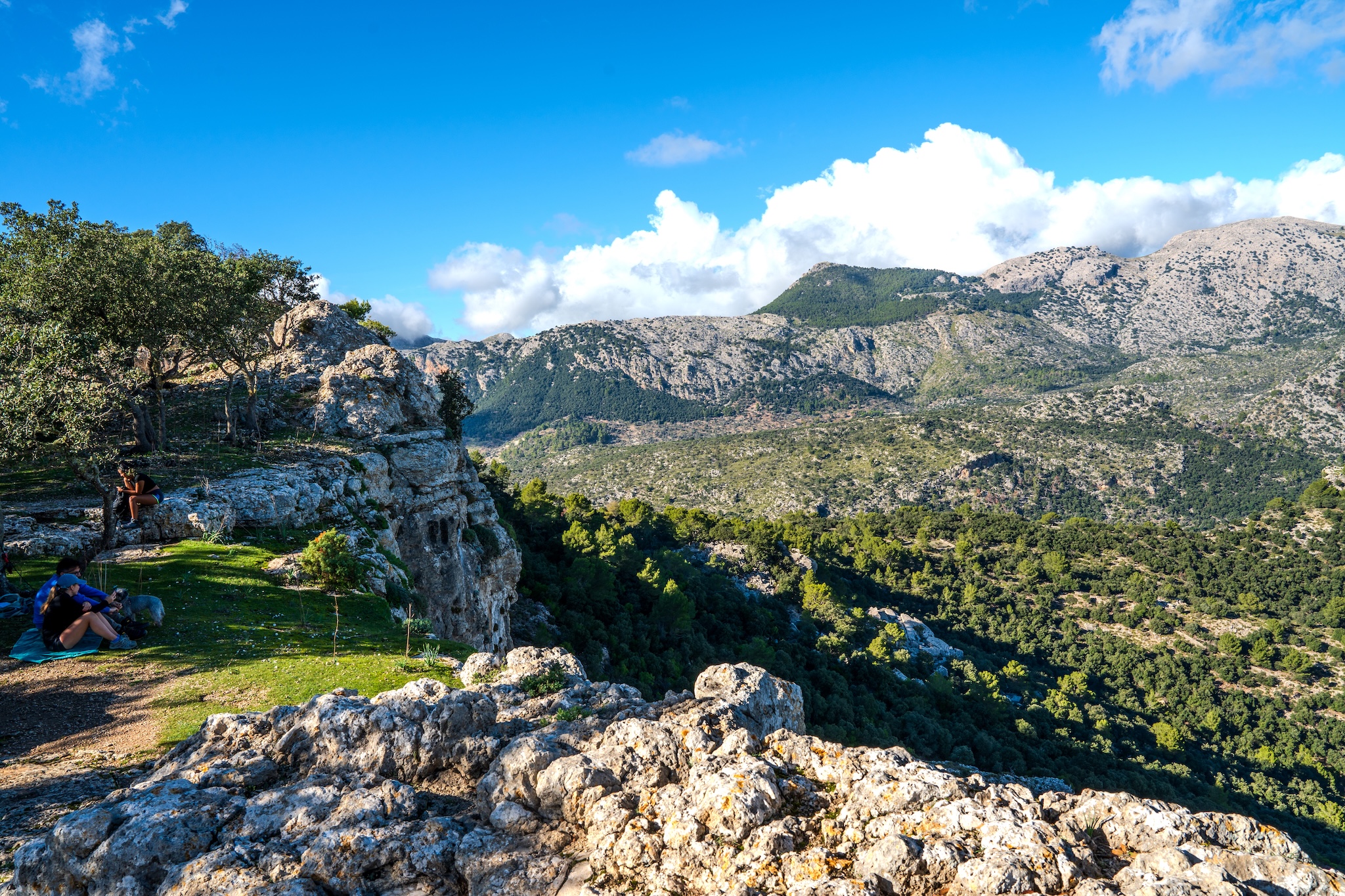
People sit for longer than they expect to, often without speaking. The view has that effect. It invites you to stop, not just to look.
If you arrive in the late afternoon, the sun drops behind the mountains in a way that pulls out every contour of the landscape. Shadows lengthen across the valley, the coastline softens, and the stone around you takes on a warm tone.
It’s one of those places where you instinctively stay longer than planned, even if you only meant to take a quick look before turning back.
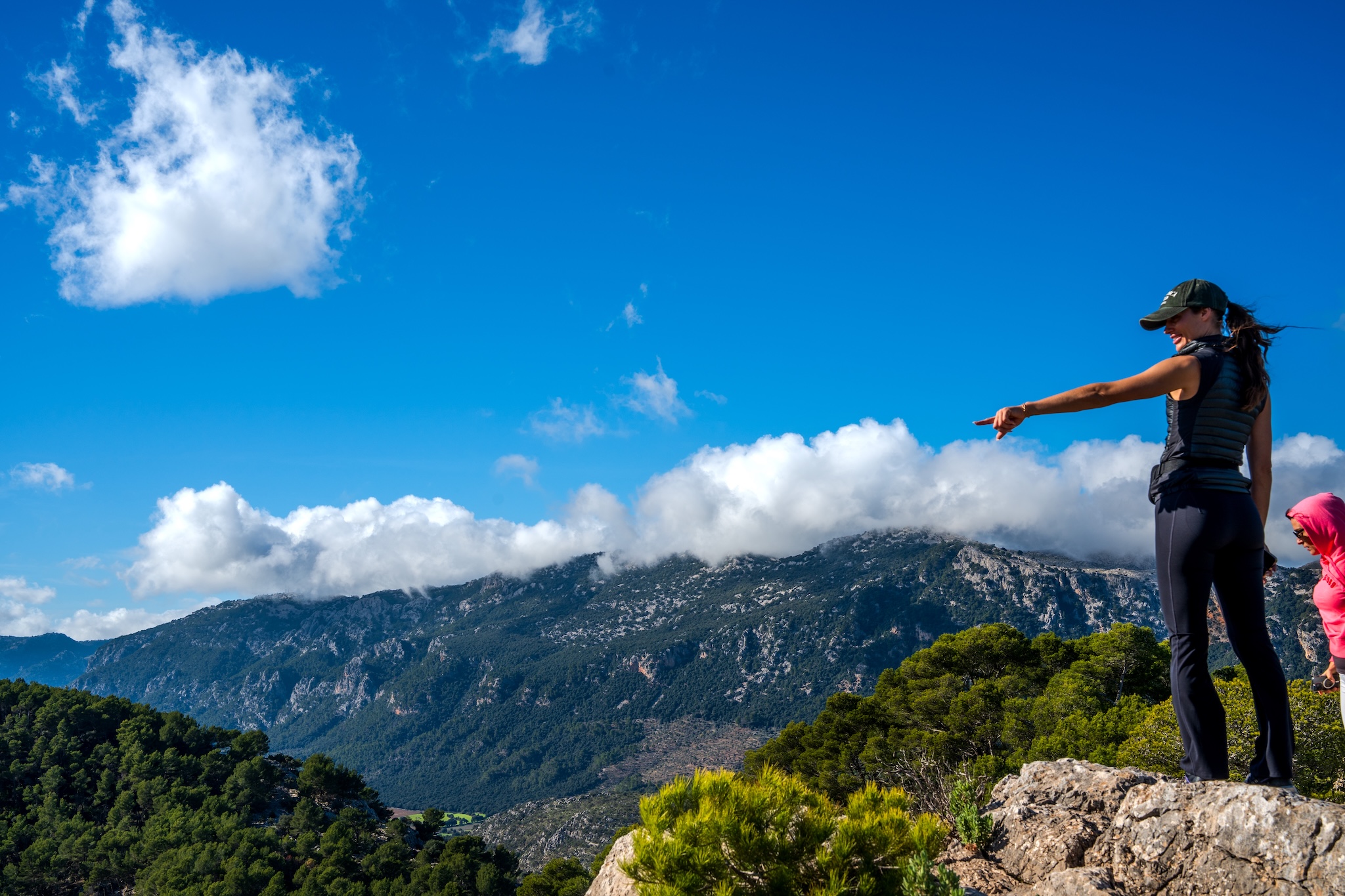
And then there is the donkey.
He tends to appear the moment you reach the top, as if he knows exactly when new hikers arrive.
Calm, patient, and far too used to attention, he has become part of the experience.
Everyone gives him a scratch or a pat, no one walks past without acknowledging him.
He stands there like the unofficial guardian of the summit, unfazed by the wind, the ridge, or the number of people gathering around him.
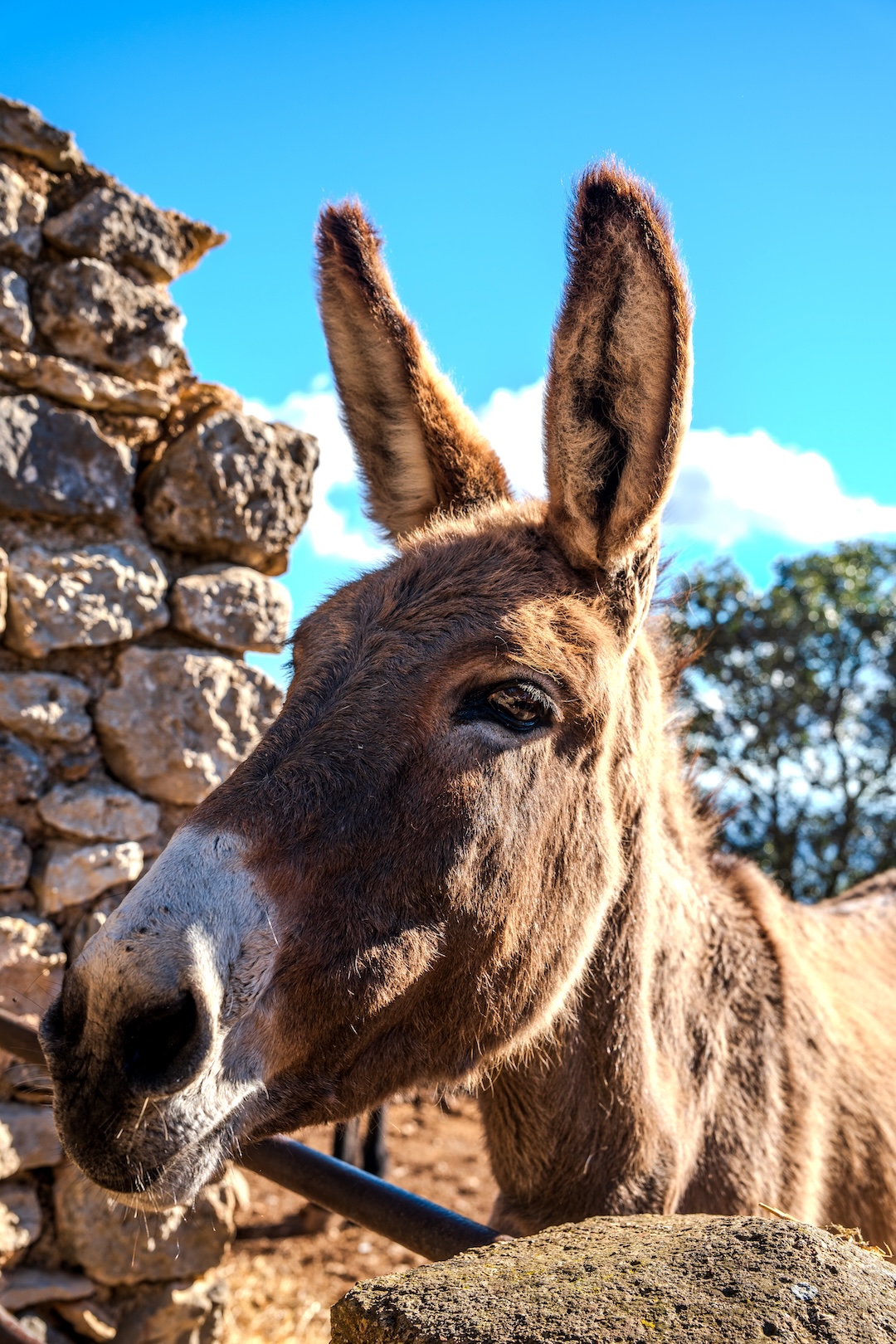
Before heading up to Castell d’Alaró, it helps to know what to expect. The route is straightforward, but the mountain has its own rhythm, and a bit of planning makes the experience smoother.
From Es Verger, the round trip takes roughly 2 to 3 hours, depending on your pace and how long you linger at the top. The climb is moderate: steady, rocky in sections, but never technical. Most people with basic fitness handle it without issues. Families manage it comfortably, and dogs usually enjoy the terrain as long as they’re used to uneven paths.
You don’t need full hiking gear, but good shoes are non-negotiable. The path switches between dirt, stone steps, and loose rock. Trainers with grip are fine. Hiking boots are ideal. Bring layers if you’re walking outside summer, as the Tramuntana can surprise you with cooler winds, especially near the summit.
The mountain reacts quickly to weather changes. Cloud cover can move in fast, and the wind strengthens near the top. In summer, the sun is unforgiving on the exposed sections. Start early or later in the afternoon to avoid the peak heat. Carry water. There are no refill points after leaving Es Verger.
The route is well marked, and getting lost is unlikely. Still, keep an eye on loose stones, especially on the descent. After rain, the rock steps can be slick. If you’re hiking with children, hold hands in the steeper sections around the castle walls. Dogs should be kept close near the summit ridges, though most roam happily for the rest of the trail.
Weekends can get busy, especially around midday. If you prefer quieter paths and a calmer summit experience, aim for early morning or late afternoon. Sunset from the top is spectacular, but bring a headlamp if you plan to descend in low light.
Statistic | Details |
|---|---|
Distance | Approximately 5.5 km round trip from Es Verger restaurant (or 8-10 km if starting from Alaró town center). |
Elevation Gain | 290-540 meters, depending on the route variation. |
Duration | 2-3 hours for the standard route from Es Verger, allowing for moderate pacing and brief stops. |
Difficulty | Moderate, suitable for individuals with average fitness; involves uneven stone paths and some steep sections. |
Best Time to Visit | Spring (March-May) or fall (September-November) for milder temperatures; avoid midday summer heat. |
Trail Type | Out-and-back or lollipop loop, with well-marked paths but requiring sturdy footwear. |

Have dreams to move to Mallorca? Get the most insightful advices on a discovery call with our top agents.